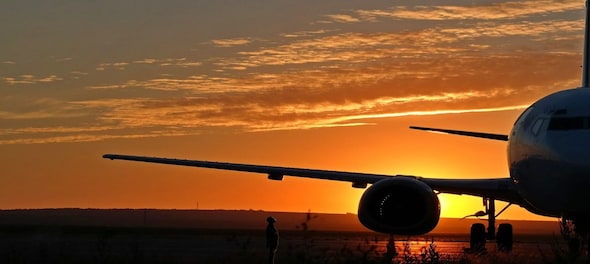
The government hiked the cap on lower and upper limits of airfares by 10 to 30 percent and increased the capacity utilisation to 80 percent until March-end. While analysts believe that the air ticket prices may increase by only 10 percent with immediate effect, it is enough to deter passenger traffic that is still around 75 percent of pre-COVID levels.
Domestic air travel is on the path to recovery in the country, with January recording a 3 percent rise in traffic compared to December. The economic survey expected the sector to recover in early 2021, but a closer look at numbers show a flattening growth curve.
From a 40 percent growth in September (month-on-month) to 15 percent growth in December (month-on-month), January witnessed a mere 3 percent growth. Compared to January 2020, the first month of 2021 recorded better growth and showed signs of revival; the industry is some distance from total recovery, said Ameya Joshi of Network Thoughts.
In a bid to boost air travel, the aviation minister had placed limits on airfares in May 2020 and divided it into seven bands based on flight duration.
"When domestic flights resumed after lockdown price fare bands applicable only on economy fares were introduced to inspire public confidence and to ensure no inconvenience was caused to the public," India's aviation minister, Hardeep Puri said.
Since then, price of crude oil has risen from $30 to $60 per barrel. Prices of ATF have gone up from ₹17000 per kl to ₹51000 per kl.However, fare levels have been raised by 10% at lower band & 30% at higher band.Due to higher supply, most travel takes place at lower band.
— Hardeep Singh Puri (@HardeepSPuri) February 15, 2021
The price for the first band has been increased from Rs 2,000-Rs 6,000 to Rs 2,200-Rs 7,800. It consists of flights with a duration of up to 40 minutes. The seventh band price has been increased from Rs 6,500-Rs 18,600 to Rs 7,200-Rs 24,200.
Since May 2020, the price of crude oil has doubled to $60 per barrel. Consequently, the aviation turbine fuel has risen 300 percent to Rs 51,000 per kl. "In comparison, fare levels have risen by 10-30 percent," Puri noted. Due to the higher supply, most travel takes place at the lower band. While the occupancy levels are far from their highs, airlines will not charge the upper limit.
He further said fares have remained unchanged for more than a decade. For example, Delhi-Mumbai fares at lower band has gone up from Rs 3,500 to 3,900 — comparable to second-class AC fares on Railways, Puri said. In 2010, Delhi-Mumbai airfare was in the range of Rs 4,000.
Check out our in-depth Market Coverage, Business News & get real-time Stock Market Updates on CNBC-TV18. Also, Watch our channels CNBC-TV18, CNBC Awaaz and CNBC Bajar Live on-the-go!


BJP is planning to ban RSS, says Shiv Sena (UBT) chief Uddhav Thackeray
May 18, 2024 8:01 PM
Punjab Lok Sabha elections: Complete list of Congress candidates
May 18, 2024 4:08 PM
Punjab Lok Sabha elections: Check full list of AAP candidates and constituencies
May 18, 2024 12:59 PM
PM Modi, Rahul Gandhi election rallies in Delhi today: Here are the routes to avoid
May 18, 2024 11:28 AM

